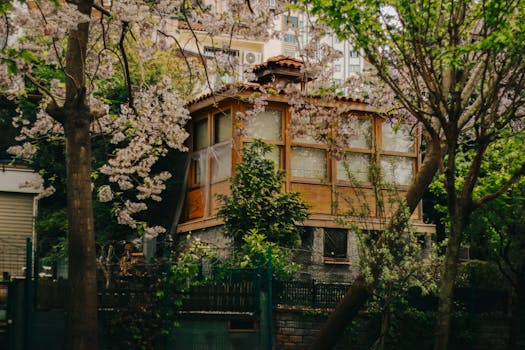
Urban Green Spaces: The Future of Outdoor Living in European Cities by 2025
Urban Green Spaces are becoming increasingly important in European cities, and it’s easy to see why. As the world becomes more urbanized, the need for green spaces has never been more pressing. Not only do they provide a peaceful escape from the hustle and bustle of city life, but they also play a crucial role in maintaining the physical and mental health of citizens. In this article, we’ll explore the future of outdoor living in European cities and how urban green spaces are set to transform the way we live, work, and play.
What are Urban Green Spaces?
Urban Green Spaces refer to any area of greenery within a city, including parks, gardens, green roofs, and even small pockets of grass and trees. These spaces can be public or private, and they can range in size from a few square meters to hundreds of hectares. The key characteristic of urban green spaces is that they provide a natural oasis in the midst of urban development, offering a range of benefits for both people and the environment.
Benefits of Urban Green Spaces
The benefits of urban green spaces are numerous and well-documented. Some of the most significant advantages include:
- Improved Air Quality: Urban green spaces help to absorb pollutants and particulate matter from the air, improving the overall air quality and making cities healthier places to live.
- Reduced Urban Heat Island Effect: Green spaces can help to mitigate the urban heat island effect, which occurs when built-up areas absorb and retain heat, making cities hotter than surrounding rural areas.
- Increased Biodiversity: Urban green spaces provide a habitat for a wide range of plant and animal species, helping to maintain biodiversity and support local ecosystems.
- Improved Mental Health: Spending time in green spaces has been shown to have a positive impact on mental health, reducing stress and anxiety while improving mood and overall well-being.
- Increased Physical Activity: Urban green spaces provide opportunities for physical activity, such as walking, cycling, and sports, which can help to reduce the risk of chronic diseases like obesity and diabetes.
The Future of Outdoor Living in European Cities
As we look to the future, it’s clear that urban green spaces will play an increasingly important role in shaping the way we live, work, and play in European cities. By 2025, we can expect to see a range of innovative and sustainable green spaces that prioritize both people and the planet. Some of the key trends and developments that are set to shape the future of outdoor living include:
- Green Roofs and Walls: Green roofs and walls are becoming increasingly popular, providing insulation, reducing energy consumption, and creating habitats for wildlife.
- Urban Forestry: Urban forestry initiatives are being implemented across Europe, with a focus on planting and maintaining trees in urban areas to improve air quality, reduce the urban heat island effect, and provide shade and shelter.
- Community-Led Green Spaces: Community-led green spaces are on the rise, with local residents and organizations coming together to create and maintain green spaces that reflect the needs and priorities of their communities.
- Smart Green Spaces: The use of technology is set to transform the way we design, manage, and interact with urban green spaces, with innovations like smart benches, green roofs, and urban forestry management systems.
Case Studies: Urban Green Spaces in European Cities
There are many examples of urban green spaces in European cities that are already making a positive impact on the environment and the people who live there. Some notable case studies include:
- Barcelona’s Superblocks: Barcelona’s superblocks program has seen the creation of car-free zones and green spaces in the city center, improving air quality, reducing noise pollution, and providing a peaceful oasis for residents and visitors.
- Copenhagen’s Green Roofs: Copenhagen has implemented a range of green roof initiatives, providing insulation, reducing energy consumption, and creating habitats for wildlife.
- Paris’s Urban Forest: Paris has launched an urban forestry initiative, with a focus on planting and maintaining trees in urban areas to improve air quality, reduce the urban heat island effect, and provide shade and shelter.






